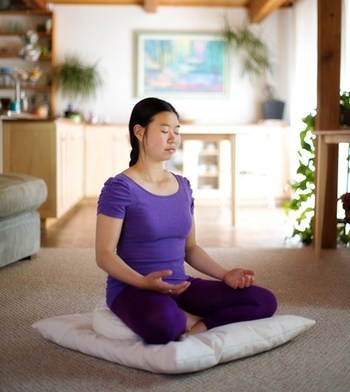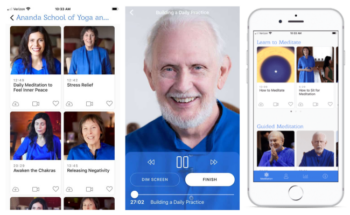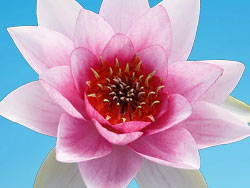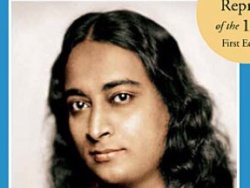 What is Meditation?
What is Meditation?
Meditation is a technique for personal growth that has been practiced for thousands of years around the world with repeatable results.
There is no aspect of your life that cannot be improved by meditation, whether it be in business, relationships, health, or developing any personal quality, such as willpower.
The highest purpose of meditation, however, is to discover your Highest Self.
What to Concentrate on in Meditation
Not only is it virtually impossible to meditate on nothingness, there are inherent dangers in even attempting to do so. For although to go deep in meditation you must empty the mind of thoughts, you must at the same time be deeply aware inwardly of inner peace. To make the mind blank is to open oneself passively to every vibratory influence in one’s environment. Mental blankness does not help one receive positive, expansive influences. It opens one to negative influences. The way to make yourself receptive to higher vibrations is to raise your consciousness to a higher vibratory level.
Rather than meditating on nothingness, meditate on the thought of freedom from “anythingness.” Soul-freedom is a positive concept. Stillness is a positive concept. Perfect peace and calmness are positive concepts. Blankness is not. Always keep your consciousness moving in the direction of more, not less, awareness.
If after meditation you find yourself wondering vaguely, “Where was I?” the chances are you were slipping into subconsciousness, not rising toward superconsciousness. There comes a point in meditation where peace steals over the mind, but because of our long association with restfulness, the mind tends to drift into a quasi-dream state. This is when our use of willpower helps us rise toward superconsciousness. Concentrate with extra intensity at the point between the eyebrows, the seat of will power and of superconscious ecstasy.
article:
10 Ways to increase your concentration
Meditation Classes at Ananda Thousand Oaks
A little help can go a long way towards making meditation a blissful daily practice. Teachers at Ananda are certified meditation teachers and are happy to meet with you privately or in groups.
Would you like to learn more? To arrange a group or private meditation class contact [email protected]
A Sample Meditation
- Prayer. Sit upright, relax completely, and then offer a prayer. If you are not comfortable with the concept of God, then ask for guidance from your own higher self.
- Relaxation. Inhale, tense the whole body, then throw the breath out and relax. Doing this three to six times will help rid the body of unconscious tensions. Now, consciously relax the various body parts, starting with your feet and working your way gradually to the head and brain. It may help you to visualize space or light filling each area as you relax it. Physical relaxation is the first step necessary for deep meditation.
- Regular Breathing to Relax the Mind. The breath is intimately linked with the mind. By controlling and relaxing the breath, we influence the mind to become calm. Inhale slowly counting one to twelve, hold your breath for the same number of counts, then exhale for the same count. This is one round of “regular breathing.” Do six to nine rounds. Your may either lengthen or shorten the number of counts according to what is comfortable, but keep the inhalation, retention and exhalation equal.
- Concentrate Your Awareness. Concentrate at the point between the eyebrows and dismiss all thoughts from the mind. Don’t think about the past, or worry about the future, but be completely centered in the here and now. As you begin your meditation, you will find it helpful to take a moment to consciously decide to leave all preoccupations behind. If you find that your mind stills wanders, gently bring it back to the point of concentration. Try to deepen your meditation until you become completely absorbed. Meditate with energy and enthusiasm, but stay focused and relaxed.
- Meditation Techniques. Start with the Hong-Sau technique for five to ten minutes. Then you can practice one or more of the following techniques:
- Chant Silently. Chants are usually simple prayers such as, “I want only Thee Lord, Thee, only Thee,” set to music. Chanting is very important because, as well as providing a point of focus for the mind, it helps open the heart and develop devotion. As your chanting becomes more internalized, try to “get behind” the words, and silently, non-verbally, express the vibration of the chant. Paramhansa Yogananda often said, “Chanting is half the battle.”

You can use a mala (prayer beads) to keep track of the number of times you have repeated a mantra or done another practice.
- Repeat a Mantra. A mantra is a spiritual word formula, often in Sanskrit. Mantras are normally chosen because of the inherent power in the sound of the words themselves as much as for their meaning. In both chanting and repeating a mantra you should try to concentrate totally on it, excluding all other thoughts from the mind and letting it carry you into a state of complete stillness.
- Do a Visualization Exercise. One of the best practices is to try to clearly visualize the eyes of an enlightened master or saint. You may want to start by looking at a photo or painting, then close your eyes and try to see his or her image at the point between the eyebrows. As you visualize more and more clearly, try to commune with the consciousness behind the eyes. The eyes are the “windows of the soul,” and the eyes of a self-realized master will help attune you to cosmic consciousness.
- Call to God with Deep Devotion. Call to God (or your higher self) in the simple language of your own heart, and ask Him to reveal Himself to you. Let His light enter into you and transform you in whatever way He knows will be for your highest good. The best time to pray for yourself or others is when your mind is calm and your heart is pure. By praying for the world or for the welfare of others, you will inevitably be moving toward the goal of meditation: an expansion of your consciousness.
- Enjoy the Results. Do only one or two techniques during a single sitting. The goal is to dive deep and become absorbed in the meditation experience. Don’t fill your whole meditation time with techniques. It is very important to simply sit and enjoy the silence, or love, or joy that has been awakened through the practice of the techniques.
- Chant Silently. Chants are usually simple prayers such as, “I want only Thee Lord, Thee, only Thee,” set to music. Chanting is very important because, as well as providing a point of focus for the mind, it helps open the heart and develop devotion. As your chanting becomes more internalized, try to “get behind” the words, and silently, non-verbally, express the vibration of the chant. Paramhansa Yogananda often said, “Chanting is half the battle.”
- Concentrate Deeply on What You Are Experiencing. Try, through deep receptivity, to increase and expand the experience. If, for instance, you are experiencing a feeling of love, let your love continue to expand until it embraces the whole world and every person and living thing in it. Continue to expand beyond the personal, giving and receiving love, until you feel that you are floating in the universal ocean of love which sustains the universe.
- Feel God’s Response. Spend the last few minutes of your meditation trying to feel God’s response in your heart. After the more active first phase of a meditation we should become receptive, since meditation is meant to be a dialogue with the Infinite. If we listen sensitively His response will come. We receive, not through the senses nor through the mind, but through intuition. The heart area is the center of intuition and it is important to end our meditation by concentrating here.
- Transition. As you leave your meditation try to hold on to the feeling of peace and joy for as long as possible by bringing your meditative consciousness into your daily routine. If you learn to do this, you will transform the quality of your life. You may want to take short mediation breaks during the day to recontact your inner center.
Download the Ananda Meditation App
This App offers guided meditations and techniques for IOS and Android based on the teachings of Paramhansa Yogananda. FREE at the APP store.
- Learn techniques, ancient and new
- Inspire your practice with guided meditations
- Use a timer to help you focus
- Create custom meditations and add chants, periods of silence, affirmations, and more
- Set reminders to strengthen your daily routine
- Save bandwidth by downloading meditations for offline viewing
GET THE ONLY MEDITATION APP WITH THE TEACHINGS OF PARAMHANSA YOGANANDA
https://www.youtube.com/watch?v=as5StbG-NTw
Or…READ A great BOOK
Meditation for Starters
Includes CD with instruction, visualization, and music
This little book with companion CD, provides everything you need to begin a meditation practice. It is filled with easy-to-follow instructions, beautiful guided visualizations, and answers to important questions on meditation such as:
- What meditation is (and isn’t)
- How to relax your body and prepare yourself for going within
- Techniques for interiorizing and focusing the mind
 Author Swami Kriyananda’s calm voice will carry your mind and spirit into a meditative mood, a place of peace. Learn meditation from a true expert, with more than 60 years of experience. Swami Kriyananda has helped many thousands of people to successfully start a regular meditation routine.
Author Swami Kriyananda’s calm voice will carry your mind and spirit into a meditative mood, a place of peace. Learn meditation from a true expert, with more than 60 years of experience. Swami Kriyananda has helped many thousands of people to successfully start a regular meditation routine.
Includes a 60-minute CD with meditation instruction, guided visualization & uplifting transformative music.
Available for purchase here













